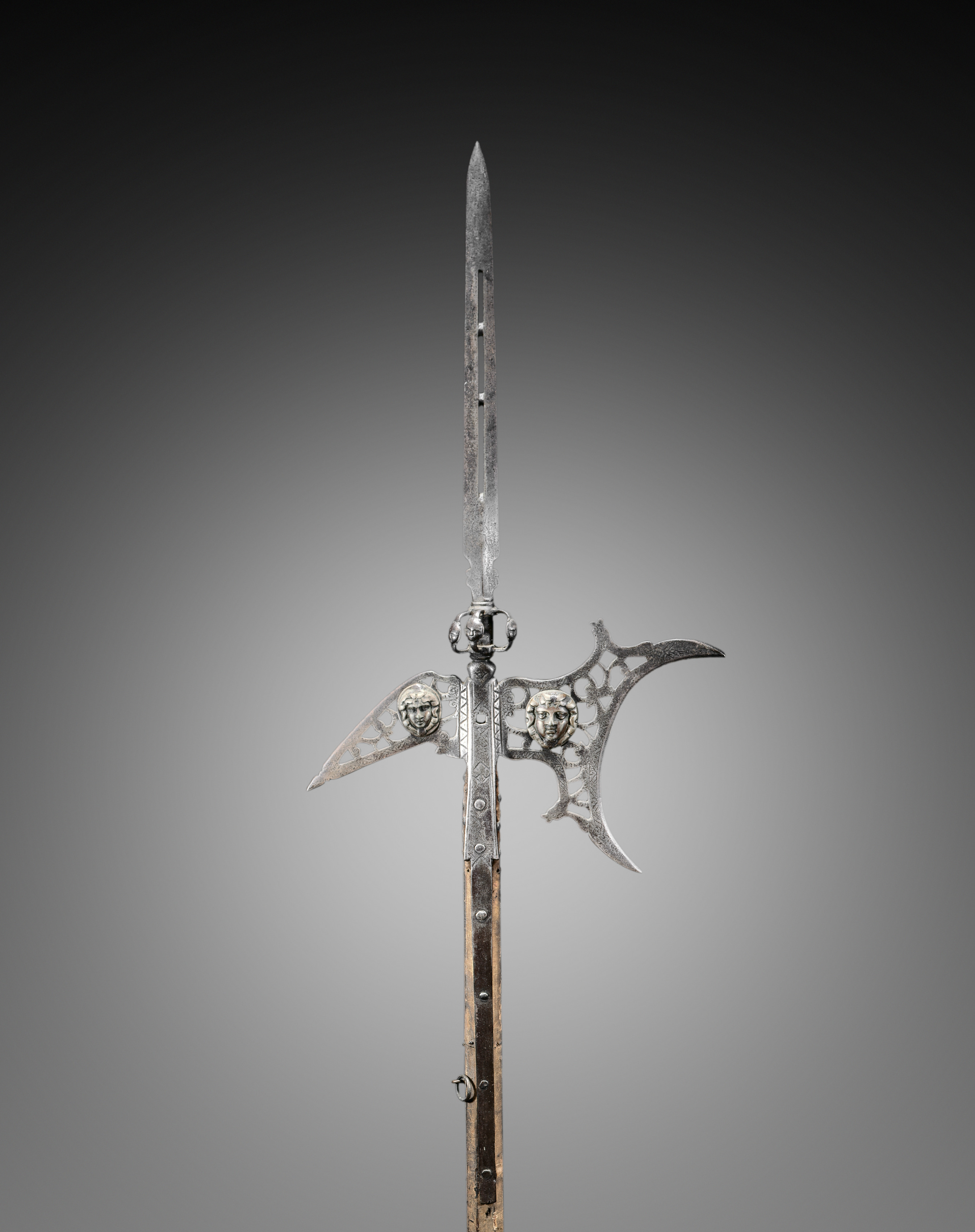The Cleveland Museum of Art
Collection Online as of April 19, 2024

Halberd
c. 1600–25
Overall: 239 cm (94 1/8 in.); Blade: 48 cm (18 7/8 in.)
Gift of Mr. and Mrs. John L. Severance 1916.1797
Location: 210A Armor Court
Did You Know?
This highly decorative example would have been for ceremonial use only.Description
The halberd was a staff weapon favored by European infantries (foot soldiers) of the 1400s and 1500s for its versatility and deadly effect. The word halberd comes from the German words Halm (staff) and Barte (axe). The halberd is, in fact, an axe that served multiple functions: the axe blade was used for hacking, the spike for thrusting, and the beak for piercing plate armor or for pulling a knight from his saddle. The halberd was used by shock troops (those who lead an attack) and by Swiss and German mercenaries. After about 1550, the halberd gradually became less functional. Its large blade provided space for coats of arms and insignia. By the late 1500s, the parade halberd had become a ceremonial weapon for palace guards.- Spiller; Frank Gair Macomber; Boston; cat. #341.
- Gilchrist, Helen Ives. A Catalogue of the Collection of Arms & Armor Presented to the Cleveland Museum of Art by Mr. and Mrs. John Long Severance; 1916-1923. Cleveland: The Cleveland Museum of Art, 1924. Mentioned: p. 200, H63; Reproduced: Plate XLIV, H63 archive.orgCleveland Museum of Art, and Helen Ives Gilchrist. Handbook of the Severance Collection of Arms and Armor. 2d ed., 1948. Reproduction: p. 45 archive.org
- Armor Court Reinstallation. The Cleveland Museum of Art (organizer).The Cleveland Museum of Art (09/10/1998); "Armor Court Reinstallation"
- {{cite web|title=Halberd|url=false|author=|year=c. 1600–25|access-date=19 April 2024|publisher=Cleveland Museum of Art}}
Source URL:
https://www.clevelandart.org/art/1916.1797